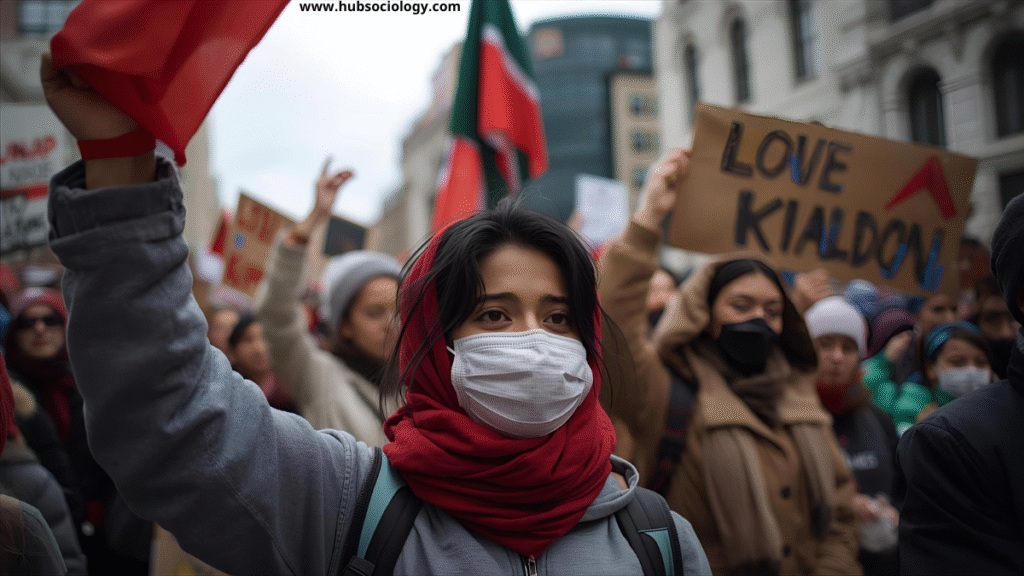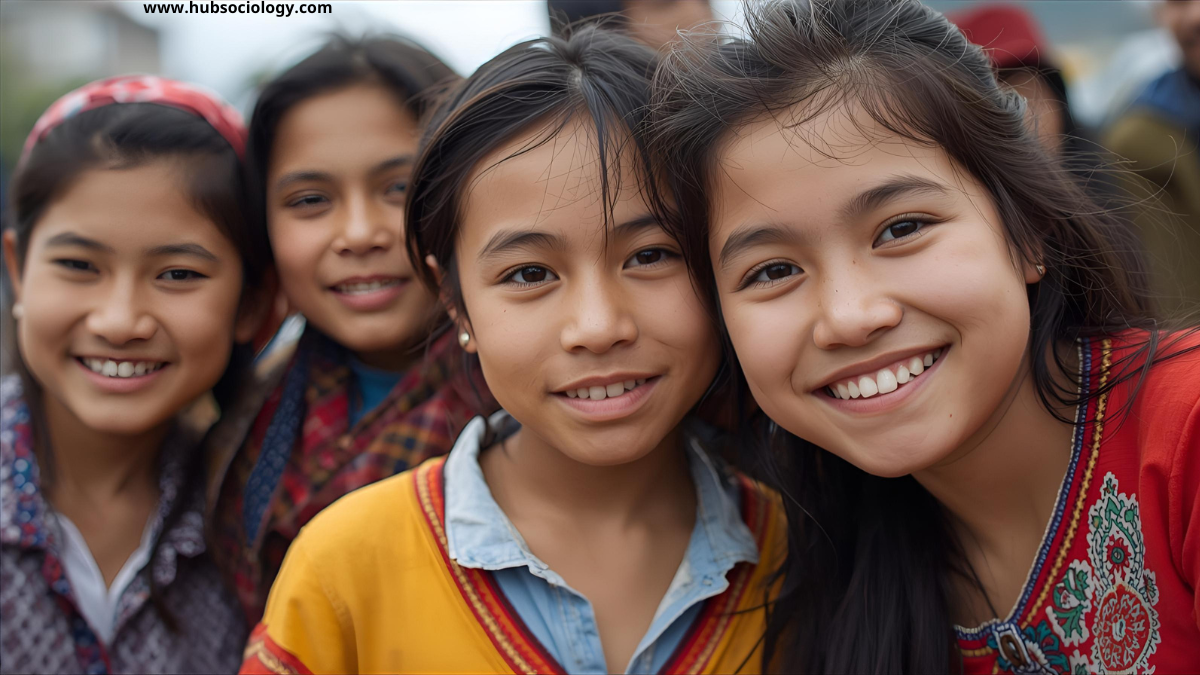Introduction on Social Movements and Youth
Social movements have long been vehicles of collective action, allowing marginalized groups and disenfranchised populations to articulate grievances and challenge structures of power. In Central Asia, a region characterized by its unique post-Soviet transition, authoritarian governance, and hybrid socio-political structures, youth play an increasingly prominent role in shaping and participating in social movements. From demands for democratic reforms to environmental activism and digital mobilizations, young people in Central Asia represent both the hopes for transformation and the anxieties of ruling elites.
This article explores the relationship between social movements and youth in Central Asia from a sociological perspective. It examines the structural conditions that shape youth engagement, the forms of collective action visible in the region, the barriers and repression youth face, and the broader implications for society. By applying sociological theories of collective action, social stratification, and globalization, the article aims to provide a nuanced understanding of how young people in Kazakhstan, Kyrgyzstan, Uzbekistan, Tajikistan, and Turkmenistan navigate activism in the 21st century.

Table of Contents
Theoretical Framework: Understanding Youth and Social Movements
Sociologists analyze social movements as collective efforts by people to promote or resist social change. Classic theories such as resource mobilization theory emphasize the importance of organizational capacity and resources, while new social movement theory highlights identity, culture, and post-materialist values. In Central Asia, both approaches are relevant:
- Resource mobilization is constrained by authoritarian structures, state repression, and limited civil society organizations.
- Identity-based activism has grown, particularly around issues like cultural rights, gender equality, environmental protection, and digital freedoms.
Youth represent a distinct sociological category in social movements. As transitional actors between childhood dependence and adult responsibility, young people often embody aspirations for societal transformation. Their relative marginalization (due to unemployment, exclusion from political decision-making, and generational hierarchy) fuels discontent, while their digital literacy and global exposure provide tools for mobilization.
Youth Demographics in Central Asia
Central Asia is a young region. According to UN demographic data, over 50% of the population in most Central Asian states is under 30 years old. This demographic reality has sociological consequences:
- Youth bulge: A large proportion of young people creates both opportunities (innovation, reformist energy) and challenges (unemployment, radicalization risks).
- Urban-rural divide: Urban youth are more connected to global networks and digital activism, while rural youth face traditional structures and fewer resources for mobilization.
- Educational expansion: Increased access to higher education has raised youth expectations, but economic systems cannot absorb their aspirations, leading to frustration and protest.
The mismatch between youthful aspirations and structural constraints creates fertile ground for social movements.
Historical Background: Social Movements in Central Asia
The trajectory of social movements in Central Asia has been shaped by Soviet legacies and post-Soviet transformations:
- Soviet period: Youth organizations such as the Komsomol were instruments of state control rather than independent activism. Dissent was heavily repressed.
- Post-independence (1991 onwards): Social movements emerged around nationalism, economic reforms, and corruption, though authoritarian regimes restricted them.
- Color Revolutions and ripple effects: The Tulip Revolution in Kyrgyzstan (2005) and subsequent political upheavals in 2010 showed the central role of youth in mass mobilization.
- 21st century global influences: Exposure to global movements like climate activism and digital campaigns has shaped youth consciousness in Central Asia, even under surveillance-heavy regimes.

Youth Participation in Contemporary Central Asian Social Movements
1. Political Movements and Democratization
Youth have participated in anti-corruption and pro-democracy protests across the region.
- In Kazakhstan, the January 2022 protests began with fuel price hikes but quickly became a mass uprising with significant youth involvement.
- In Kyrgyzstan, young people have repeatedly mobilized in street protests that toppled governments (2005, 2010, 2020).
- In Uzbekistan and Tajikistan, stricter state control limits overt protests, but youth still engage through underground networks, cultural resistance, and diaspora activism.
2. Digital Activism and Online Movements
Social media platforms such as Instagram, Telegram, and TikTok have become vital spaces for youth expression.
- Campaigns on gender-based violence, environmental protection, and corruption circulate widely online.
- Digital literacy enables young activists to bypass censorship, although states increasingly regulate cyberspace.
3. Environmental and Climate Activism
Environmental degradation in Central Asia (e.g., the Aral Sea disaster, air pollution in Almaty, water disputes) has inspired youth-led activism.
- Youth groups in Kazakhstan and Kyrgyzstan have mobilized around climate change awareness.
- These movements often connect to global climate justice discourse, showing the influence of new social movement theory.
4. Gender Equality and Feminist Movements
Young women and feminist groups are increasingly visible in the region:
- International Women’s Day marches in Bishkek (often met with repression) highlight youth-led feminist activism.
- Online campaigns challenge domestic violence, patriarchal norms, and lack of political representation.
5. Cultural and Religious Activism
Youth movements also express identity politics, from reclaiming indigenous traditions to reviving Islamic practices.
- While some adopt progressive interpretations, others lean towards conservative or radical ideologies, reflecting the sociological complexity of youth identity formation.
Structural Challenges Facing Youth Movements
Despite growing activism, youth in Central Asia face formidable barriers:
- Authoritarian repression: Security forces frequently arrest or intimidate young activists. Protests are often violently dispersed.
- Weak civil society: Unlike Eastern Europe, Central Asia lacks strong NGOs or independent unions to sustain movements.
- Economic precarity: High unemployment and labor migration push youth toward survival strategies rather than long-term activism.
- Generational hierarchy: Traditional respect for elders often marginalizes youth voices in decision-making.
- Surveillance and censorship: States heavily monitor online activities, limiting digital activism.
These constraints create a paradox: youth are the most willing to mobilize, but also the most vulnerable to repression.
Sociological Dimensions of Youth in Central Asian Social Movements
1. Class and Stratification
Youth movements often reflect class divides. Middle-class, educated urban youth dominate online activism, while working-class and rural youth are more likely to engage in disruptive street protests. Migrant youth, especially those working in Russia, also influence discourse through remittances and transnational communication.
2. Identity and Generational Change
Central Asian societies are experiencing a generational transition:
- The Soviet-era generation values stability and order.
- The post-Soviet youth prioritize identity, rights, and opportunities.
This generational clash is visible in the debates between conservative elders and reformist youth.
3. Globalization and Transnationalism
Youth activism in Central Asia does not exist in isolation. Global movements like Black Lives Matter, Fridays for Future, and MeToo resonate among Central Asian youth, who adapt these narratives to local contexts. The role of diaspora youth in Europe and Russia also strengthens transnational solidarity.
4. Religion and Secularization
The resurgence of Islam has influenced youth activism. Some young people advocate for religious freedoms, while others join secular or feminist movements resisting patriarchal interpretations of religion. This duality demonstrates the pluralistic and contested nature of youth identities.
Case Studies on Social Movements and Youth
- Kyrgyzstan: Known for its relatively open political space, Kyrgyz youth have spearheaded democratic protests. Student unions and informal networks played key roles in mobilization during political upheavals.
- Kazakhstan: The January 2022 protests highlighted both the grievances of unemployed and marginalized youth and the capacity of the state to repress them violently.
- Uzbekistan: Youth-driven online movements against corruption and censorship exist but operate cautiously under authoritarian surveillance.
- Tajikistan and Turkmenistan: Youth activism is largely suppressed, with only limited underground or diaspora-driven movements.
Implications for the Future on Social Movements and Youth
The role of youth in Central Asian social movements has several sociological implications:
- Political transformation: Youth activism signals potential democratization, though authoritarian regimes resist change.
- Social change: Feminist, environmental, and digital movements indicate gradual shifts in values and norms.
- Risk of radicalization: Exclusion and repression may push some marginalized youth toward extremist ideologies.
- Hybrid futures: Likely, Central Asia will see both continued authoritarian control and incremental gains in youth activism.
Conclusion on Social Movements and Youth
From a sociological perspective, youth in Central Asia are not passive subjects of authoritarian regimes but active agents of social change. Their participation in social movements—whether through street protests, online campaigns, or cultural activism—reveals deep structural tensions between aspirations for justice and the realities of repression. Despite obstacles, the demographic weight, digital skills, and global connectedness of Central Asian youth ensure they will remain central to the region’s evolving social and political landscape.

In the years ahead, the trajectory of Central Asia will depend significantly on how states engage with their youth populations: whether through continued suppression or by allowing meaningful participation in shaping their societies. For sociologists, Central Asian youth movements provide rich ground for understanding the interplay of generational change, social stratification, globalization, and resistance in contemporary societies.
FAQs on Social Movements and Youth in Central Asia
1. What is the role of youth in social movements in Central Asia?
Youth in Central Asia play a central role in social movements by challenging authoritarian systems, raising awareness about social issues such as corruption, gender equality, and environmental problems, and using digital platforms to mobilize collective action.
2. Why are social movements and youth in Central Asia closely connected?
Because over half of the Central Asian population is under 30, young people represent both the most dissatisfied and most dynamic segment of society. Their aspirations for better opportunities, justice, and participation in governance drive many social movements.
3. How do social movements and youth in Central Asia use digital activism?
Social movements and youth in Central Asia increasingly rely on platforms like Telegram, Instagram, and TikTok to spread information, organize protests, and raise awareness on issues like gender rights and environmental crises, despite government surveillance.
4. What challenges do youth face in participating in social movements in Central Asia?
Young activists face multiple obstacles, including authoritarian repression, weak civil society structures, high unemployment, traditional generational hierarchies, and strict digital censorship.
5. Which countries in Central Asia see the strongest connection between social movements and youth?
Kyrgyzstan has the most visible youth-led movements due to its relatively open political environment. Kazakhstan also witnessed large-scale youth involvement in the 2022 protests, while Uzbekistan, Tajikistan, and Turkmenistan have more restricted youth activism.
6. How do social movements and youth in Central Asia influence democratization?
Youth movements act as catalysts for democratization by demanding accountability, political reforms, and civil rights. Though governments often resist, youth mobilizations highlight societal demands for more inclusive governance.
7. Are environmental issues important for social movements and youth in Central Asia?
Yes, environmental activism is a major field where social movements and youth in Central Asia are active. Issues like air pollution, water scarcity, and the Aral Sea disaster have inspired young activists to connect with global climate justice movements.
8. How do gender and feminism connect to social movements and youth in Central Asia?
Youth-led feminist movements in Central Asia challenge patriarchal traditions and campaign against domestic violence. Women and young feminists often use social media to amplify their voices, making gender equality a growing part of youth activism.
9. What impact do global trends have on social movements and youth in Central Asia?
Global movements such as Fridays for Future, MeToo, and digital democracy initiatives inspire social movements and youth in Central Asia. They adapt these global narratives to local contexts, creating a hybrid form of activism.
10. What is the future of social movements and youth in Central Asia?
The future of social movements and youth in Central Asia will likely be shaped by a mix of repression and resilience. While authoritarian regimes will continue to restrict activism, the demographic strength, digital skills, and determination of youth ensure that they remain key drivers of societal change.

1 thought on “Social Movements and Youth in Central Asia: A Sociological Perspective”